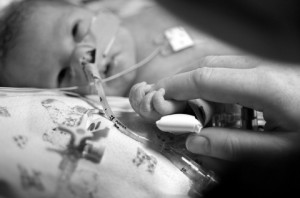Botched Forceps Delivery Prompts Calls for Change
 What should have been a joyous time with their newborn turned to tragedy for two parents who are now calling for significant reforms in the area of forceps delivery in Australia.
What should have been a joyous time with their newborn turned to tragedy for two parents who are now calling for significant reforms in the area of forceps delivery in Australia.
Hannah and Martin Beaty are working to increase public awareness of the risks of serious harm following the death of their infant son shortly after his birth in April of 2014.
Botched forceps delivery led to death
According to the Beatys, their baby died 26 hours following his birth as a result of “catastrophic” head injuries caused by the use of forceps during his delivery. Attending physicians in the labor and delivery suite made five failed attempts at a forceps assisted delivery of the infant, causing him to sustain a skull fracture before he was ultimately born via emergency caesarean section. Not long after he was born, the baby started to exhibit bleeding from the mouth and nose, was placed in the intensive care unit and died within hours.
Inquest revealed departure from standard of care
According to the inquest which followed their child’s death, the physicians in the delivery room did not adhere to accepted guidelines dictating that attempts to deliver with the aid of forceps are strictly limited to three. Since that time, the guidelines have undergone revisions that now limit attempts at forceps-assisted delivery to one. The Beatys suggest that the regulations need to go even further and that forceps delivery should be banished altogether due to the suffering their baby and their entire family have had to endure.
Fundamentals of forceps-assisted delivery
In essence, a forceps delivery is a type of assisted vaginal birth in which a physician utilizes a specialized instrument resembling a pair of large tongs or spoons to aid the infant’s head out of the mother’s birth canal. This technique is most often used during labor’s second stage if the process of not showing appropriate signs of progression and if the baby’s health is dependent on a quick delivery.
A forceps-assisted delivery can pose notable risks to both mother and child, and is not something that should be performed without consideration of alternatives. Risks to mothers include uterine ruptures, bladder injuries, anemia, genital tract wounds, incontinence and eventual pelvic organ prolapse.
Risks to infants delivered in this way include:
-
Facial injuries
-
Facial palsies
-
Trauma to the eyes
-
Skull fractures
-
Seizures
-
Death
Forceps delivery injury and medical malpractice
As with any labor and delivery case, it is incumbent upon physicians, nurses and all other healthcare providers to follow accepted protocols and the appropriate standard of care in treating mothers and babies alike. Departures from those practices can result in profound harm, lasting disability and death, and may form the basis of actionable delivery room malpractice.
Families who have experienced the agony of watching an infant struggle in the aftermath of of birth injury are afforded the right to seek financial compensation, justice and accountability from those responsible for the damage done.
- Women's Weekly, Baby killed in botched forceps delivery, http://www.aww.com.au/latest-news/news-stories/baby-killed-in-botched-forceps-delivery-21876
- The Merck Manual Home Health Handbook, Birth Injury, http://www.merckmanuals.com/home/childrens_health_issues/problems_in_newborns/birth_injury.html
- Mayo Clinic, Tests and Procedures – Forceps Delivery, http://www.mayoclinic.org/tests-procedures/forceps-delivery/basics/definition/prc-20014741
- Medscape, Forceps Delivery Treatment & Management, http://emedicine.medscape.com/article/263603-treatment


 Resources
Resources
 Resources
Resources
